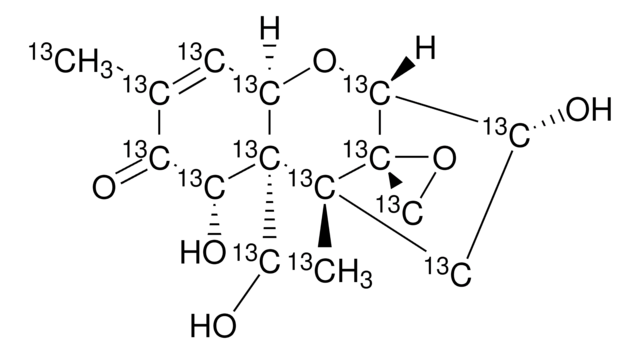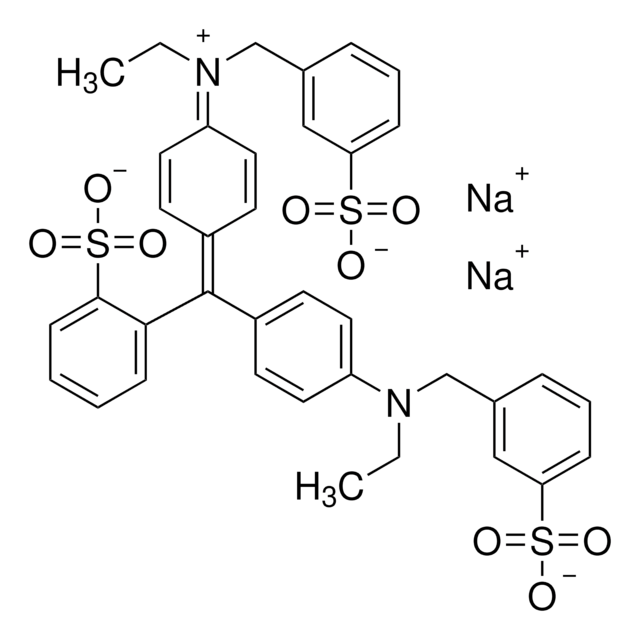34124
Deoxynivalenol solution
100 μg/mL in acetonitrile, analytical standard
Sinónimos:
3α,7α,15-Trihydroxy-12,13-epoxytrichothec-9-en-8-one, DON, Vomitoxin
About This Item
Productos recomendados
grado
analytical standard
caducidad
limited shelf life, expiry date on the label
concentración
100 μg/mL in acetonitrile
técnicas
HPLC: suitable
gas chromatography (GC): suitable
aplicaciones
cleaning products
cosmetics
food and beverages
personal care
formato
single component solution
temp. de almacenamiento
−20°C
cadena SMILES
CC1=C[C@H]2O[C@@H]3[C@H](O)C[C@@](C)([C@]34CO4)[C@@]2(CO)[C@H](O)C1=O
InChI
1S/C15H20O6/c1-7-3-9-14(5-16,11(19)10(7)18)13(2)4-8(17)12(21-9)15(13)6-20-15/h3,8-9,11-12,16-17,19H,4-6H2,1-2H3/t8-,9-,11-,12-,13-,14-,15+/m1/s1
Clave InChI
LINOMUASTDIRTM-QGRHZQQGSA-N
¿Está buscando productos similares? Visita Guía de comparación de productos
Categorías relacionadas
Descripción general
Check out our entire range of trichothecene type mycotoxin reference materials
Aplicación
Palabra de señalización
Danger
Frases de peligro
Clasificaciones de peligro
Acute Tox. 4 Dermal - Acute Tox. 4 Inhalation - Acute Tox. 4 Oral - Eye Irrit. 2 - Flam. Liq. 2
Código de clase de almacenamiento
3 - Flammable liquids
Clase de riesgo para el agua (WGK)
WGK 2
Punto de inflamabilidad (°F)
35.6 °F - closed cup
Punto de inflamabilidad (°C)
2 °C - closed cup
Equipo de protección personal
Eyeshields, Faceshields, Gloves, type ABEK (EN14387) respirator filter
Elija entre una de las versiones más recientes:
¿Ya tiene este producto?
Encuentre la documentación para los productos que ha comprado recientemente en la Biblioteca de documentos.
Los clientes también vieron
Artículos
Supel Tox DON SPE cartridges required fewer process steps and fewer reagents than the IAC cleanup method for wheat matrix samples prior to HPLC analysis.
Supel Tox DON SPE cartridges required fewer process steps and fewer reagents than the IAC cleanup method for wheat matrix samples prior to HPLC analysis.
Contenido relacionado
Mycotoxin chemistry is diverse with some toxins being relatively harmless and some very dangerous like aflatoxins, citrinin, ergot alkaloids fumonisins. For all Food & Beverage manufacturers and testers, find a detailed list of products for each step of your mycotoxin analysis workflow.
Nuestro equipo de científicos tiene experiencia en todas las áreas de investigación: Ciencias de la vida, Ciencia de los materiales, Síntesis química, Cromatografía, Analítica y muchas otras.
Póngase en contacto con el Servicio técnico










